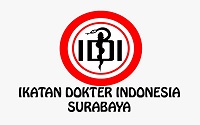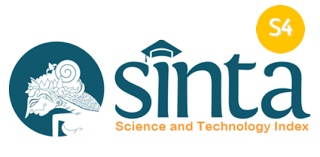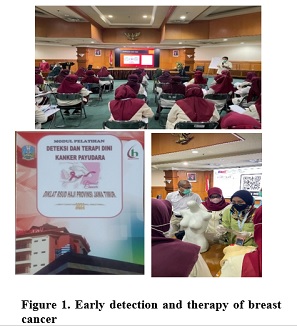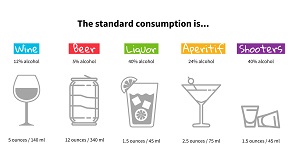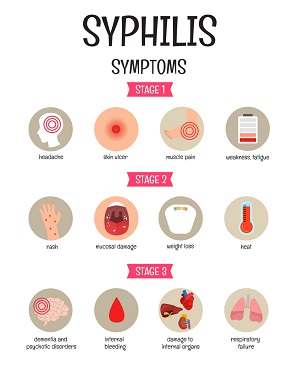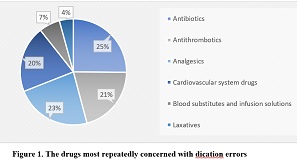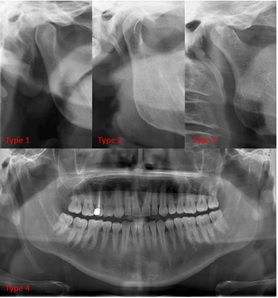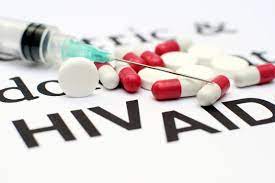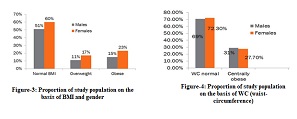Study of Bacteriological Content and Risk Factors of Drinking Water Consumption Patterns in Cases of Stunting Toddler

Stunting is one of global nutrition problems, especially in developing countries including Indonesia. The prevalence of stunting in Demak Regency, Indonesia, in 2021 was 4.34%, and in 2022 it was 2.99%. However, stunting problem remains a priority because the impact of stunting can hinder efforts to enhance the health of the society and the development of the quality of human resources. Risk factors for stunting are influenced by behavioral aspects of the environment, like sanitation and drinking water. This study aimed to determine the content of bacteriological factors that contribute to the risk pattern of drinking water consumption in cases of stunting toddlers in Temuroso Village, Working Area of Guntur I Health Center, Demak Regency, Indonesia. This study was a quantitative observational case study. The population included families and toddlers in Temuroso Village, totaling as many as 854 people. The sampling technique was purposive sampling, so the sample size was 182 people for cases and controls. Data analysis used Chi-Square test and linear regression test. The bacteriological content was predominantly negative (66.5%), with the majority of subjects showing no infections (67%). Most participants fell into the high drinking water consumption category (62.1%). Stunting incidence was significantly associated with bacteriological content (p <0.0001) and drinking water consumption patterns (p <0.0001). Among these, bacteriological content was the most dominant factor influencing stunting (exp B =0.199). In summary, the primary risk factors for stunting among toddlers in Temuroso Village, within the Guntur I Health Center working area, Demak Regency, were bacteriological content (p <0.000) and drinking water consumption patterns (p <0.000).
1. INTRODUCTION
Stunting is a significant nutritional issue affecting many countries globally, particularly in low- and middle-income nations. It is concerning due to its association with increased risks of morbidity, mortality, and suboptimal brain development, which can lead to delayed motor skills and mental development11. According to the 2020 Basic Health Research Data, the prevalence of stunting in Indonesia was 30.8%22. In Central Java Province, the prevalence reached 28.5%, exceeding the national average of 28.0%33.
Demak Regency, a district in Central Java, has been prioritized for stunting interventions. Although stunting rates have declined, the issue remains a priority due to its impact on public health efforts and human resource development. The government of Demak has implemented policies and strategies aimed at reducing stunting. However, stunting remains intertwined with the country's demographic dynamics. Indonesia's demographic bonus, characterized by a high proportion of productive-age residents, could be jeopardized by stunting, which threatens to undermine economic growth if not addressed. Despite efforts, the stunting reduction rate in Indonesia over the past five years has remained slow, ranging between 27-29%, indicating a persistent chronic issue4,545.
The solution of stunting is influenced by behavioral changes and preventive practices at the individual, family, community, and policy levels66. Environmental factors such as sanitation and access to clean drinking water are also key contributors77. While many households have access to basic sanitation, the quality of drinking water remains a concern88. A Water Quality Survey revealed that nearly 67% of households consume contaminated water, with Escherichia coli, derived from animal or human waste, being a common contaminant99. A study in Kalasan, Sleman, Indonesia found that several drinking water depots did not meet standards and were contaminated withE. coli1010.
Inadequate drinking water contributes to infectious diseases that can affect a child’s growth and development, potentially leading to stunting1111. Communities lacking access to safe drinking water are at a higher risk of health issues, particularly stunting. Clean water, along with proper sanitation, is essential for preventing infections and improving the nutritional status of young children1212. Studies have identified poor water quality and unsafe water handling practices as predictors of stunting1313. A study by Fortune also found that a factor in the incidence of stunting is the lack of decent and reliable physical quality of drinking water1414. People often store water in containers like gallons or buckets, which, if not properly maintained, can become contaminated and lead to diarrheal diseases1515. Drinking of contaminated water often happens because there is a habit that the drinking water is kept in unsafe places and environments that predisposed the drinking water to bacterial contamination16.
Families without access to a safe water source are at more than twice the risk of stunting in children compared to those with reliable water sources1717. Safe drinking water must meet physical quality standards, including being clear, colorless, odorless, and free from impurities1818. Inadequate water sanitation can lead to infections such as diarrhea or parasitic infestations, impairing nutrient absorption and leading to weight loss in children1919. Unsafe water management practices, such as improper storage or handling, increase the risk of bacterial contamination, exacerbating nutritional issues like stunting, underweight, and wasting20,212021. Behavioral practices related to water consumption and storage are critical factors in preventing waterborne diseases and stunting2222. Research by Nurjazuli et al. identified drinking water quality and handling practices as significant risk factors for stunting in communities2323. This study aimed to assess bacteriological content and water consumption patterns as risk factors for stunting in toddlers in Temuroso Village, Guntur I Health Center working area, Demak Regency, Indonesia.
2. MATERIALS AND METHODS
This study employed a quantitative observational approach with a case-control design. The study population included families and children under five residing in Temuroso Village within the Guntur I Community Health Center area, Demak, Indonesia totaling 854 individuals across multiple neighborhoods. A purposive sampling method was used, resulting in a total sample size of 182 participants, with 91 in the case group and 91 in the control group. Data analysis involved the Chi-Square test to examine relationships between each independent and dependent variable. Logistic regression analysis with predictive modeling was then applied, where the Odds Ratio, indicated by Exp(B), demonstrated the predictive influence between variables, specifically the predicted risk factor magnitude for the case group. This study received ethical clearance from the Health Research Ethics Commission of the Faculty of Public Health at Diponegoro University, with Ethical Approval No: 474/EA/KEPK-FKM/2023.
3. RESULTS
The largest group of respondents comprised children aged 13 to 24 months, totaling 67 individuals (36.8%), while the smallest group was represented by those aged 49 to 60 months, with only 16 individuals (8.8%). Among the respondents, 100 are male (54.9%) and 82 are female (45.1%). Mothers aged 21 to 30 years made up 72.5% of the respondents, totaling 132, whereas those aged 20 or younger represented 12.6% (23 respondents). The majority of the respondents were high school graduates (112 individuals, 61.5%), while college graduates were the least represented group (16 individuals, 8.8%). Most families reported earnings aligned with the regional minimum wage, with 91
UNICEF/WHO/WORLD BANK. Levels and trends in child malnutrition UNICEF / WHO / World Bank Group Joint Child Malnutrition Estimates Key findings of the 2021 edition. World Heal Organ [Internet]. 2021;1–32. Available from: https://www.who.int/publications/i/item/9789240025257 http://www.who.int/nuthrowthdb/jme_brochoure2017
UNICEF-Indonesia. The State of Children in. State Child Indones p Trends, Oppor Challenges Realiz Child Rights [Internet]. 2020;65. Available from: https://www.unicef.org/indonesia/sites/unicef.org.indonesia/files/2020-06/The-State-of-Children-in-Indonesia-2020.pdf
Dinkes Jateng. Tengah Tahun 2023 Jawa Tengah. 2023; https://dinkesjatengprov.go.id/v2018/dokumen/1Profil_Kesehatan_2023/files/downloads/Profil%20Kesehatan%20Jawa%20Tengah%202023.pdf
Muna, 2021. Health Profile of Demak Regency 2021. Publication Number: 33210.2225. BPS-Statistic of Demak Regency. Available from: https://web-api.bps.go.id/download.php?f=X6jhmf/qHMAnfmT6pFtYqEhNK3ZPUzFOL0JUN0JMcVpQNXo1dnpEMGcxWlNva2V4d1ZvWk10QnY3NU1wWW5EMWlFV1RGQXliUHJqVE9UOWJPRmNlRXlkK1VSaXV6bGNiUVBMYTRpWmNKRFhIYmFGbFZiUlEzanJlODhsOUVqQzVWZS9Xb2sxemVDbnY1YldxV3JPaWVQbVgvYUsvNTRVQlJ3MlVFV1FUQTdXMGVvbkxTSUhlRWd5WFNZRW5vWVRQYTc4SVovdW5HVUNYbVFvN3oxc29TS2o4MWIyMnZLTTNPbEVMbDNiL0pwSVZ4OWFBNEN3ak43NlRUMmlPUjBmWDZaYU9SY1V0TGh3L0Y5Z0Q=&_gl=1*1uzziig*_ga*MTU0OTU0NDU4OC4xNzI5NDc5MjM0*_ga_XXTTVXWHDB*MTcyOTQ3OTIzNC4xLjAuMTcyOTQ3OTIzNC4wLjAuMA
Alamsyah, IE., Republika, Thursday 07 Juny 2022. BKKBN: Stunting Ancam Bonus Demografi Indonesia [BKKBN: Stunting Threatens Indonesia's Demographic Bonus.]. Retrieved: 23 February 2023 of https://ekonomi.republika.co.id/berita/rd46my349/bkkbn-stunting-ancam-bonus-demografi-indonesia#google_vignette
Winterfeld A. Improving child nutrition. Vol. 18, NCSL legisbrief. 2010. 1–2 p. https://data.unicef.org/resources/improving-child-nutrition-the-achievable-imperative-for-global-progress/
Indonesian Ministry of Health. Causes of Stunting in Children [Internet]. Indonesian Ministry of Health. 2020. Available from: http://www.depkes.go.id. https://www.kemkes.go.id/id/profil-kesehatan-indonesia-2020
Rahayuwati L, Ibrahim K, Hendrawati S, Sari CWM, Yani DI, Pertiwi ASP, et al. Pencegahan Stunting melalui Air Bersih, Sanitasi, dan Nutrisi [Stunting Prevention through Clean Water, Sanitation, and Nutrition]. War LPM. 2022;25(3):356–65. https://journals2.ums.ac.id/warta/article/view/1031
Ministry of Health, Republic Health. 2022. Profil Kesehatan Indonesia [Indonesia Health Profile] [Internet]. Pusdatin.Kemenkes.Go.Id. 2023. Kementrian Kesehat. Republik Indones. Available from: https://kemkes.go.id/id/indonesia-health-profile-2022
Sekarwati N, Subagiyono H, Wulandari PD, Iii K, Lingkungan S, Wirahusada Y. Analisis Kandungan Bakteri Total Coliform Dalam Air Bersih Dan Escherechia Coli Dalam Air Minum Pada Depot Air Minum Isi Ulang di Wilayah Kerja Puskesmas Kalasan Sleman [Analysis of Total Coliform Bacteria in Clean Water and Escherichia coli in Drinking Water at Refill Water Stations in the Kalasan Health Center Work Area, Sleman]. Kesmas. 2016;10(2):1–12. https://media.neliti.com/media/publications/143657-ID-none.pdf
Wulan N, Mofu RM, Amiruddin A. Analisis Karakteristik Ibu, Perilaku Akses Air Minum Dan Sanitasi Layak Terhadap Kejadian Stunting Balita Di Kabupaten Keroom [Analysis of Maternal Characteristics, Drinking Water Access Behavior, and Proper Sanitation on the Incidence of Stunting in Toddlers in Keerom Regency]. J Ilm Obs. 2022;14(3):101–11. https://stikes-nhm.e-journal.id/JOB/article/view/777
Ministry of Health, Republic Health. Profil Kesehatan Indonesia 2016. 100 p. https://kemkes.go.id/id/profil-kesehatan-indonesia-2023
Zalukhu A, Mariyona K, Andriyani L. Hubungan Sanitasi Lingkungan Dengan Kejadian Stunting Pada Anak Balita (0-59) Bulan Di Nagari Balingka Kecamatan Iv Koto Kabupaten Agam Tahun 2021 [The Relationship Between Environmental Sanitation and the Incidence of Stunting in Children Under Five (0-59 Months) in Nagari Balingka, IV Koto District, Agam Regency, 2021]. J Ners Univ Pahlawan [Internet]. 2022;6(1):52–60. Available from: http://journal.universitaspahlawan.ac.id/index.php/ners/article/view/3867
Khoerul ummah. Hubungan Faktor Kesehatan Lingkungan Terhadap Kejadian Stunting Pada Balita di Wilayah Puskesmas Kassi Kassi Kota Makassar Tahun 2021 [The Relationship Between Environmental Health Factors and the Incidence of Stunting in Toddlers in the Kassi-Kassi Health Center Area, Makassar City, 2021]. Skripsi. 2022;(8.5.2017):2003–5. https://jurnal.umj.ac.id/index.php/JKK/article/view/12202
Hasan MM, Gerber N. Bacterial contamination of drinking water and food utensils: Impacts of piped water on child health in north-western Bangladesh. Water Resour Rural Dev [Internet]. 2017;10 (September 2016):33–44. Available from: https://doi.org/10.1016/j.wrr.2018.10.001
Getachew A, Tadie A, Chercos DH, Guadu T, Alemayehu M, Gizaw Z, et al. Bacteriological quality of household drinking water in North Gondar Zone, Ethiopia; a community-based cross-sectional study. Appl Water Sci [Internet]. 2021;11(12):1–8. Available from: https://doi.org/10.1007/s13201-021-01515-0
Ramdaniati SN, Nastiti D. Hubungan Karakteristik Balita, Pengetahuan Ibu Dan Sanitasi Terhadap Kejadian Stunting Pada Balita Di Kecamatan Labuan Kabupaten Pandeglang [The Relationship Between Toddler Characteristics, Maternal Knowledge, and Sanitation with the Incidence of Stunting in Toddlers in Labuan District, Pandeglang Regency]. Hearty. 2019;7(2):47–54. DOI: 10.32832/hearty.v7i2.2877
Hartati S, Zulminiati Z. Fakta-Fakta Penerapan Penilaian Otentik di Taman Kanak-Kanak Negeri 2 Padang [Facts on the Implementation of Authentic Assessment in State Kindergarten 2 Padang]. J Obs J Pendidik Anak Usia Dini. 2020;5(2):1035–44. DOI: 10.31004/obsesi.v5i2.788
Nisa SK, Lustiyati ED, Fitriani A. Sanitasi Penyediaan Air Bersih dengan Kejadian Stunting pada Balita [Sanitation of Clean Water Supply and Its Association with the Incidence of Stunting in Toddlers]. J Penelit dan Pengemb Kesehat Masy Indones. 2021;2(1):17–25. https://journal.unnes.ac.id/sju/index.php/jppkmi/article/view/47243
Anwar, SGz, MSi K, Indria Setyani L. The Association Between Drinking Water Management Behavior and the Level of Macronutrient Adequency with Nutritional Status of Toddlers. Amerta Nutr. 2022;6(1SP):306–13. DOI: 10.20473/amnt.v6i1SP.2022.306-313
Lilik NIS, Budiono I. Kontribusi Kondisi Fisik Lingkungan Rumah dengan Kejadian Diare dan Hubungannya terhadap Kejadian Stunting [Contribution of Home Physical Environmental Conditions to the Incidence of Diarrhea and Its Association with Stunting]. Indones J Public Heal Nutr [Internet]. 2021;1(1):101–13. Available from: https://journal.unnes.ac.id/sju/IJPHN/article/view/47482
Luby SP, Rahman M, Arnold BF, Unicomb L, Ashraf S, Winch PJ, et al. Effects of water quality, sanitation, handwashing, and nutritional interventions on diarrhoea and child growth in rural Bangladesh: a cluster randomised controlled trial. Lancet Glob Heal [Internet]. 2018;6(3):e302–15. Available from: http://dx.doi.org/10.1016/S2214-109X(17)30490-4
Nurjazuli N, Budiyono B, Raharjo M, Wahyuningsih N. E. Environmental factors related to children diagnosed with stunting 3 years ago in Salatiga City, Central Java, Indonesia. Toxicologie Analytique et Clinique. 2023; 35(3), 198-205 DOI: 10.1016/j.toxac.2023.01.003
Regulation of the Minister of Health of the Republic of Indonesia No. 492/Menkes/Per/IV/2010 on Drinking Water Quality Standards. Ministry of Health Regulation, Republic of Indonesia. 2010
Anggraeni L, Yuria M, Maryuni, Gustina I. Penyebab Langsung Dan Penyebab Tidak Langsung [Direct and Indirect Causes of Stunting in Children Under Five]. J Ilmu Kesehat. 2022;5(2):140–6. https://journal.unhasa.ac.id/index.php/jikes/article/view/358
Lestari W, Margawati A, Rahfiludin Z. Risk factors for stunting in children aged 6-24 months in the sub-district of Penanggalan, Subulussalam, Aceh Province. J Gizi Indones (The Indones J Nutr [Internet]. 2014;3(1):37–45. Available from: https://ejournal.undip.ac.id/index.php/jgi/article/view/8752/7081
Picauly I, Toy SM. Analisis Determinan Dan Pengaruh Stunting Terhadap Prestasi Belajar Anak Sekolah Di Kupang Dan Sumba Timur, NTT [The Determinant Analysis and the Impact of Stunting for School Children School Performance in Kupang and Sumba Timur, NTT]. J Gizi dan Pangan. 2013;8(1):55. DOI: 10.25182/jgp.2013.8.1.55-62
Rokom, Sehat Negeriku, 08 April 2018. Cegah Stunting dengan Perbaikan Pola Makan, Pula Asuh, dan Sanitasi [Prevent Stunting Through Improvements in Dietary Patterns, Parenting Practices, and Sanitation]. Retrieved: 28 Juny 2023 of https://sehatnegeriku.kemkes.go.id/baca/rilis-media/20180407/1825480/cegah-stunting-dengan-perbaikan-pola-makan-pola-asuh-dan-sanitasi-2/
Mashar SA, Suhartono S, Budiono B. Faktor-Faktor yang Mempengaruhi Kejadian Stunting pada Anak: Studi Literatur [Factors Influencing the Incidence of Stunting in Children: A Literature Review]. J Serambi Eng. 2021;6(3):2076–84. https://ojs.serambimekkah.ac.id/jse/article/view/3119
Ministry of Health, Republic Health. Regulation of the Minister of Health of the Republic of Indonesia No 14 Tahun 2021 About Business Activities and Products in the Implementation of Risk-Based Business Licensing in the Health Sector. Ministry of Health of the Republic of Indonesia. 2021;455. https://www.kemkes.go.id/id/profil-kesehatan-indonesia-2021
Rah JH, Cronin AA, Badgaiyan B, Aguayo V, Coates S, Ahmed S. Household sanitation and personal hygiene practices are associated with child stunting in rural India: A cross-sectional analysis of surveys. BMJ Open. 2015;5(2). DOI: 10.1136/bmjopen-2014-005180
Nasyidah M, Fajar NA, Najmah N. Tinjauan Faktor Air dan Sanitasi dengan Kejadian Stunting pada Balita [A Review of Water and Sanitation Factors with child Stunting Incidence]. J Kesehat Komunitas. 2023;8(3):597–606. DOI:10.25311/keskom.Vol8.Iss3.1338
Rahmawati LA, Ranggauni Hardy F, Anggraeni A. Faktor-Faktor yang Berhubungan dengan Stunting Sangat Pendek dan Pendek pada Anak Usia 24-59 Bulan di Kecamatan Sawah Besar[Factors Associated with Short Stunting and Very Short Stunting in Children Aged 24-59 Months in Sawah Besar District]. J Ilm Kesehat Masy Media Komun Komunitas Kesehat Masy. 2020;12(2):68–78. DOI: 10.52022/jikm.v12i2.36
Minsarnawati M. Variasi Spasial dan Determinan Stunting pada Balita di Indonesia [Spatial Variation and Determinants of Stunting in Toddlers in Indonesia]. C H O R T S [Internet]. 2020;163(2):549–54. Available from: http://repository.unhas.ac.id/id/eprint/855/
Gani A, Budiharsana MP. The Consolidated Report on Indonesia Health Sector Review 2018. Minist Natl Dev Plan Repub Indones. 2019;56. https://www.unicef.org/indonesia/media/621/file/Health%20Sector%20Review%202019-ENG.pdf%20.pdf
Headey D, Palloni G. Water, Sanitation, and Child Health: Evidence From Subnational Panel Data in 59 Countries. Demography. 2019;56(2):729–52. DOI: 10.1007/s13524-019-00760-y
Uliyanti, Tamtomo DG., Anantanyu, S,. Faktor Yang Berhubungan Dengan Kejadian Stunting Pada Balita Usia 24-59 Bulan [Factors Associated with the Incidence of Stunting in Toddlers Aged 24-59 Months]. J Ilmu Kesehat. 2023;11(2):148. DOI: 10.30602/jvk.v3i2.107
Kesehatan JI, Husada S, Pratama B, Angraini DI, Nisa K. Literatur Review : Penyebab Langsung (Immediate Cause) yang Mempengaruhi Kejadian Stunting pada Anak [Literature Review: Immediate Causes Influencing the Incidence of Stunting in Children]. Jiksh [Internet]. 2019;10(2):299–303. Available from: https://akper-sandikarsa.e-journal.id/JIKSH https://jurnalsandihusada.polsaka.ac.id/JIKSH/article/view/167
Pratama IS, Aini SR, Maharani BF. Implementasi Gasing (Gerakan Anti Stunting) Melalui Phbs Dan Pemeriksaan Cacing [Implementation of Gasing (Anti-Stunting Movement) Through Healthy Living Behaviors and Deworming Checks]. J Pendidik dan Pengabdi Masy. 2019;2(1):80–3. DOI: 10.29303/jppm.v2i1.1019
Otsuka Y, Agestika L, Widyarani, Sintawardani N, Yamauchi T. Risk factors for undernutrition and diarrhea prevalence in an urban slum in Indonesia: Focus on water, sanitation, and hygiene. Am J Trop Med Hyg. 2019;100(3):727–32. DOI: 10.4269/ajtmh.18-0063
Kuewa Y, Herawati H, Sattu M, Otoluwa AS, Lalusu EY, Dwicahya B. The relationship between environmental sanitation and the incidence of stunting in toddlers in Jayabakti village in 2021. Public Heal J [Internet]. 2021;12(2):112–8. Available DOI: 10.51888/phj.v12i2.73
Ferronato N, Ragazzi M, Torrez Elias MS, Gorritty Portillo MA, Guisbert Lizarazu EG, Torretta V. Application of healthcare waste indicators for assessing infectious waste management in Bolivia. Waste Manag Res. 2020;38(1):4–18. DOI: 10.1177/0734242X19883690
Ihsan A, Riviwanto M, Darwel D. Pengaruh Sumber Air Bersih, Jamban, Dan Pola Asuh Terhadap Stunting
Pada Balita Dengan Diare Sebagai Variabel Intervening [The Influence of Clean Water Sources, Sanitation Facilities, and Parenting Practices on Stunting in Toddlers with Diarrhea as an Intervening Variable]. Bul Keslingmas. 2020;39(1):1–5. https://ejournal.poltekkes-smg.ac.id/ojs/index.php/keslingmas/article/view/5619/1538
Hasan A, Kadarusman H, Sutopo A. Air Minum, Sanitasi, dan Hygiene sebagai Faktor Risiko Stunting di Wilayah Pedesaan [Drinking Water, Sanitation, and Hygiene as Stunting Risk Factors in a Rural Area]. J Kesehat. 2022;13(2):299–307. DOI: 10.26630/jk.v13i2.2984
Sema B, Azage M, Tirfie M. Childhood stunting and associated factors among irrigation and non-irrigation user northwest, Ethiopia: a comparative cross-sectional study. Ital J Pediatr. 2021;47(1):1–11. https://ijponline.biomedcentral.com/articles/10.1186/s13052-021-01048-x
Copyright (c) 2024 Ahmad Zaerozi, Tri Joko, Nurjazuli

This work is licensed under a Creative Commons Attribution-ShareAlike 4.0 International License.
- The journal allows the author to hold the copyright of the article without restrictions.
- The journal allows the author(s) to retain publishing rights without restrictions.
- The legal formal aspect of journal publication accessibility refers to Creative Commons Attribution Share-Alike (CC BY-SA).
- The Creative Commons Attribution Share-Alike (CC BY-SA) license allows re-distribution and re-use of a licensed work on the conditions that the creator is appropriately credited and that any derivative work is made available under "the same, similar or a compatible license”. Other than the conditions mentioned above, the editorial board is not responsible for copyright violation.






